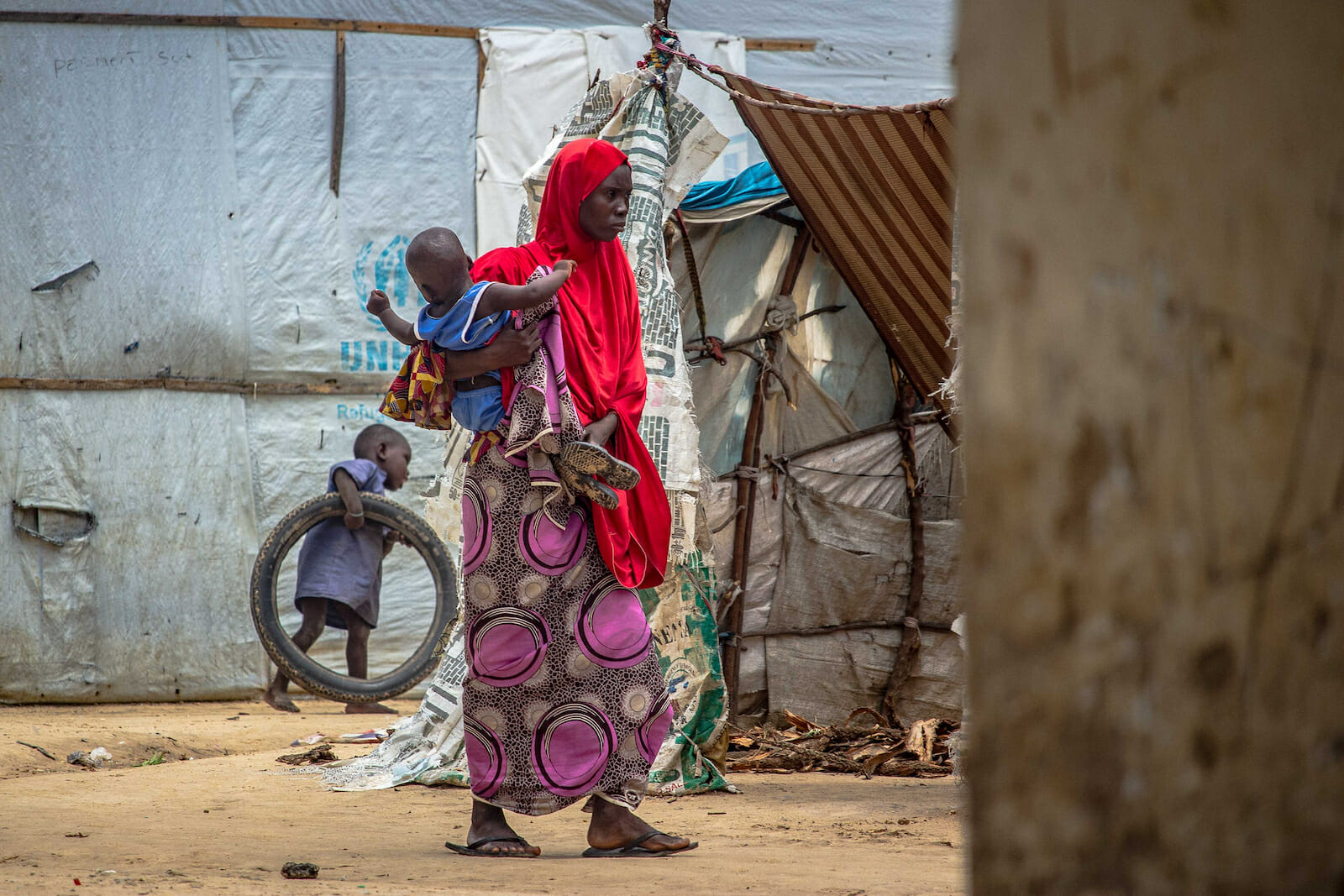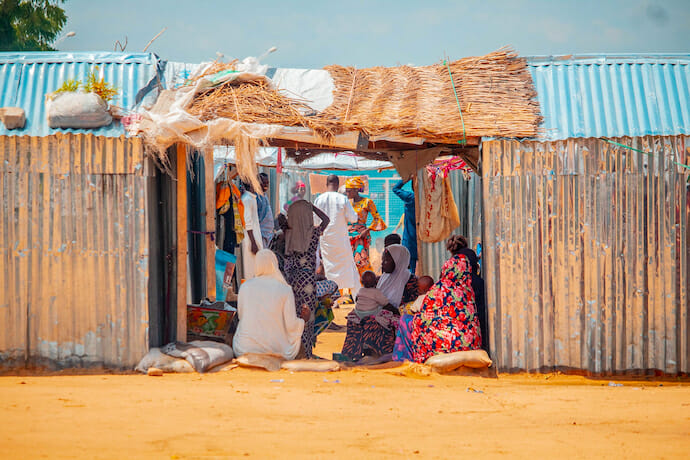
Can Boko Haram Fighters be Rehabilitated?
Boko Haram is an insurgent group based in Nigeria’s northeastern region. Since 2009, this group has killed 30,000 civilians and displaced over 2.4 million people living in the Lake Chad region. Since 2015, the Nigerian government’s response towards Boko Haram has oscillated between ignoring the ground realities to counterproductive “heavy-handed measures.” Although certain measures did make a sustainable improvement and the army was able to retake territories under Boko Haram control, the army struggled to hold the retaken areas.
Boko Haram’s continued resilience highlights the weakness of a pure military solution to this intractable problem of combating a jihadist insurgent group. In the absence of a political settlement, with the continued emphasis on a disarmament, demobilisation, and reintegration strategy, in 2016 the Nigerian government announced the creation of the Operation Safe Corridor. Since the initiation of this operation, the program was met with scathing criticism of the government’s approach of rewarding jihadists, and questions were raised whether local communities would welcome the repentant into their society. With five years into the program and close to a thousand former insurgents having graduated from this program, we can now assess the success of Operation Safe Corridor.
The Nigerian government launched Operation Safe Corridor in 2016 after it concluded that a military strategy alone will not be sufficient to defeat Boko Haram. The operation aims at encouraging “low-risk” Boko Haram fighters to defect from the group by providing them with opportunities to reintegrate back into society. The facility is located at Mallam Sidi, in Gombe State. Fighters are categorised as “low-risk” if they were not ideologically indoctrinated, conscripted, or abducted, and their reinsertion into society would not cause a backlash against the government. They are low risk because they did not buy into the Boko Haram ideology but were rather forced into it.
Brookings notes that these “repentant” fighters have given several reasons for their defections, such as, “mounting scepticism of the insurgency’s prospects, exposure to atrocious violence, the danger posed to them and their families, aversion to the factions’ unfair and brutal internal politics, [and] lack of material gain after years of service and, for some, the desire to escape a movement they were coerced into joining.” They have been crucial in providing intelligence on Boko Haram’s activities to the military. Many female ex-combatants left the group because of the deplorable living condition or due to the death of their spouses. Several of them were encouraged to become suicide bombers or remarry within the group. Refusal is often met with detention. For most of them, Operation Safe Corridor is a way out, and often their only way out.
Hundreds of government officials are currently working under this program, including imams, deradicalized specialists, physiologists, social workers, educators, artisans, and drug counselors to help the former combatants to recover from trauma, acquire basic education and vocational training. After being certified as low threats, the fighters enter the six months program, where they undergo therapy, religious re-education, literacy, and vocational training. Imams conduct religious sermons and lectures aimed at refuting Boko Haram’s religious teachings and narratives by highlighting texts from the Quran that prohibits the use of violence. Partnerships with imams have proven to be very successful as clients raise questions such as the possibility of redemption after committing atrocities.

Since extreme poverty and lack of income opportunities throughout Nigeria were the biggest motivating factors for many to join an insurgency group like Boko Haram, Operation Safe Corridor provides vocational training to participants as a means of seeking a livelihood after reintegration. Operation Safe Corridor provides training from carpentry, fishing or poultry farming, tailoring or sewing, welding, and shoemaking. Many joined Boko Haram as child soldiers, and thus never had any chance of developing any employable skills. The vocational training forms the crux of this program as it provides these former soldiers economic empowerment and offers hope when they reintegrate back into society. It is also hoped that it will reduce the chances of recidivism.
Since its inception, Operation Safe Corridor has proved its potential. Its very existence has provided for Boko Haram recruits to defect from the fight that many viewed as futile. Learning about the program was critical in motivating them to defect. Fearing they would not be imprisoned if they turned themselves in, Operation Safe Corridor gave them an option. The graduates have reported having benefitted from the various types of education and services they received, especially the psycho-social sessions offered to them, which helped them to reintegrate themselves back into society after the initial struggle. Thirdly, graduates are very appreciative of the vocational training skills which allowed them to take up professions.
Operation Safe Corridor is not without its drawbacks. One of the biggest shortcomings of Operation Safe Corridor is the recruitment process. While donors and officials hope to facilitate thousands of defectors, it has failed in its primary task of bringing in the right people. In addition to rijal (fighters), Operation Safe Corridor also picks up awam (non-combatants and local civilians) who were forced to stay back as passive subjects under Boko Haram rule. Approximately, 20 to 25% of those who are under the Operation Safe Corridor program were real insurgents. Moreover, many donors have expressed their concern that authorities have treated this program as a “catch for all” for a wide range of individuals. There have been times when the program picked up individuals outside the purview of low-risk fighters- minors suspected of being child soldiers, individuals suspected of being Boko Haram members based on kinship, and senior jihadists who negotiated freedom for intelligence cooperation.
The second drawback is the allegation of terrible treatments that many participants have faced after they have entered government custody. After the fighters have turned themselves in, they are taken to detention centres for screening. At this stage, most of the defectors have reported insufficient food and water, lack of information of their release time, absence of medical facilities, and even repeated beatings at temporary housing before reaching the program’s facility. Conditions of confinement in some of the detention centers were so bad that people have died. Several participants have said they would not have defected if they were aware of the prolonged hardships they would have to endure. This is a massive deterrent for those insurgents who wish to give up arms. Some of the low-level risk defectors found themselves in the facility for as long as three years, without any contact with family members, while others died during confinement.
The next big hurdle for Operation Safe Corridor is reintegration into society. Most of the commoners who were picked up by the program do not find any problem in finding acceptance in their local community, but the insurgents are usually met with hostility once they head back. The broader population is opposed to the idea that any former Boko Haram fighters should benefit from the government’s forgiveness and monetary help from donor support. Many people believe that repentant fighters who are granted amnesty without apologizing to their victims can never bring long-term peace and stability.
For most people, the process of reintegration is too early on as the conflict is still ongoing and priority should be given to rebuilding the lives of victims. The government is spending a lot of money on the rehabilitation of jihadists while there has been no psychological help from the government to assist victims who have suffered and witnessed horror or assistance in the form of medical bills for those injured. Leniency towards the perpetrators of such barbarity feels like an insult to many.
It is quite evident that the existence of the Safe Corridor Operation is itself enough for fighters to defect from Boko Haram and participate in the rehabilitation process. But the program has clear shortcomings which need immediate attention.
First, the government needs to improve its screening process between awam and rijal as most awam’s are ending up at the detention centres. The government should have background knowledge of the population and learn the difference between the two groups. The government should also make it public knowledge the criteria they are using to differentiate between low-level risks and high-level risk fighters, as the latter group can lie about their role in Boko Haram to be labeled as a low-level risk to be admitted into the program. Former rijal should also participate in the selection process to ensure there are fewer errors.
Secondly, the government should tackle the systematic detainee abuse problems and take measures to protects the detainees during the entire period. Many of the defectors keep in touch with insurgent fighters, thus, the defectors must have a positive experience so that can persuade others to follow their path. The feedback received from the detainees is abysmal with reports on abuse and deplorable living conditions. These conditions have proved too contentious from a humanitarian perspective and also prose a major threat to the program’s reputation as the program mostly relies on word of mouth amongst the rijal.
Thirdly, the Nigerian government is spending an enormous amount of money on repentant fighters, but little is being done to prepare the communities that are receiving them. The whole program seems pointless if deradicalized fighters cannot be reintegrated into society. No department or agency has been mandated to keep up this role. The state government has expressed little to no motivation to take up the responsibility. More time should be invested in raising public awareness and changing the perception as most citizens view this operation as amnesty. Coordinators need to explain the overall goal behind this program, the motivation behind why the defectors left their lives as Boko Haram fighters, and the obstacles they had to overcome to register themselves as participants of this operation and share the success stories of the operation. The authorities can also hold public trials of Boko Haram militants who are accused of committing major crimes to emphasise the goal of prosecuting insurgents where appropriate.
